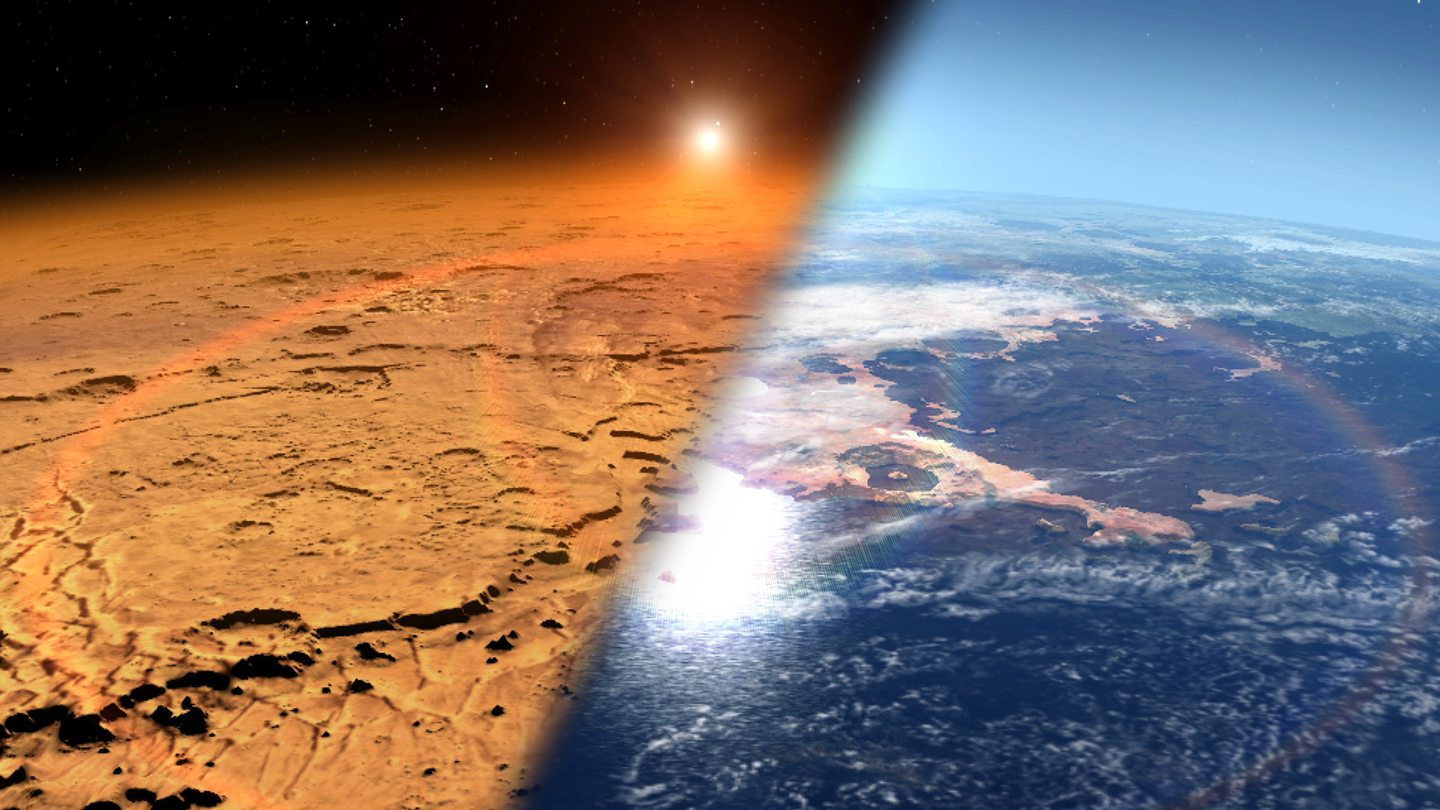Scientists discover how life on Mars may have formed
Researchers have modeled Mars’ ancient atmosphere, suggesting formaldehyde could explain unusual carbon isotope findings and hint at the potential for life on the Red Planet 3 to

Mars may seem like a barren, lifeless world today, but 3 to 4 billion years ago, conditions were very different. (CREDIT: NASA Goddard Space Flight Center)
Mars may seem like a barren, lifeless world today, but 3 to 4 billion years ago, conditions were very different. Geological evidence indicates that liquid water once flowed on its surface. Since water is closely tied to life, researchers have long wondered if life ever existed on the Red Planet.
A team of scientists from Tohoku University is working to answer that question by exploring how organic matter might have formed in Mars' ancient atmosphere.
Organic matter typically comes from living organisms like plants and animals, or as the result of certain chemical reactions. By studying the stable carbon isotope ratio (13C/12C) in this matter, scientists can uncover important clues about how life’s building blocks were created.
This method has been used on Mars, where NASA's Curiosity rover uncovered organic matter in sediments that were surprisingly depleted in 13C. Even more puzzling, the carbon isotope ratios varied widely between different samples. What caused this inconsistency remained a mystery.
In response to this, researchers Shungo Koyama, Tatsuya Yoshida, and Naoki Terada at Tohoku University developed a sophisticated model to simulate the ancient Martian atmosphere. Their focus was on a simple compound—formaldehyde (H2CO).
Related Stories
Previous work by the same team suggested that formaldehyde could have been produced in Mars’ early atmosphere, making it a potential key to solving the isotope puzzle.
Formaldehyde is important because it can lead to the formation of complex organic molecules like sugars, which are essential to life. The team hypothesized that formaldehyde might explain the strange isotope values found by Curiosity and could even offer a clue about possible past life on Mars.
Their model combined photochemistry and climate data to simulate Mars' atmosphere from billions of years ago. The key finding was that the depletion of 13C in formaldehyde likely resulted from the interaction between CO2 and ultraviolet radiation from the Sun.
When solar UV rays broke apart CO2, they caused a preference for one isotope of carbon over the other. The team also found that the isotope ratios could change based on several factors, including the atmospheric pressure on ancient Mars, the planet’s surface reflectivity, the ratio of CO to CO2, and how much hydrogen was being released by volcanic eruptions.
“This model provides a possible explanation for previously unexplained findings, such as why 13C was mysteriously depleted," said Koyama, a graduate student at Tohoku University.
The research suggests that formaldehyde played a role in creating organic matter on early Mars. This means that essential molecules for life, such as sugars and ribose (a key component of RNA, present in all living cells), might have been produced there. If this is true, it raises fascinating questions about whether Mars could have supported microbial life in the distant past.
The team’s findings, published in Scientific Reports, bring scientists one step closer to understanding the ancient environment on Mars. They also open up new possibilities for future missions seeking evidence of life. Even if formaldehyde itself doesn’t prove life once existed on Mars, it shows that some of the necessary ingredients were likely present.
As scientists continue to study Mars, each discovery brings us closer to answering one of humanity’s biggest questions: Was there ever life on the Red Planet?
The research from Tohoku University provides a new perspective on how the building blocks of life might have formed and survived in Mars' distant past, pointing to more complex and intriguing possibilities than previously imagined.
Note: Materials provided above by The Brighter Side of News. Content may be edited for style and length.
Like these kind of feel good stories? Get The Brighter Side of News' newsletter.
Joshua Shavit
Science & Technology Writer | AI and Robotics Reporter
Joshua Shavit is a Los Angeles-based science and technology writer with a passion for exploring the breakthroughs shaping the future. As a contributor to The Brighter Side of News, he focuses on positive and transformative advancements in AI, technology, physics, engineering, robotics and space science. Joshua is currently working towards a Bachelor of Science in Business Administration at the University of California, Berkeley. He combines his academic background with a talent for storytelling, making complex scientific discoveries engaging and accessible. His work highlights the innovators behind the ideas, bringing readers closer to the people driving progress.



